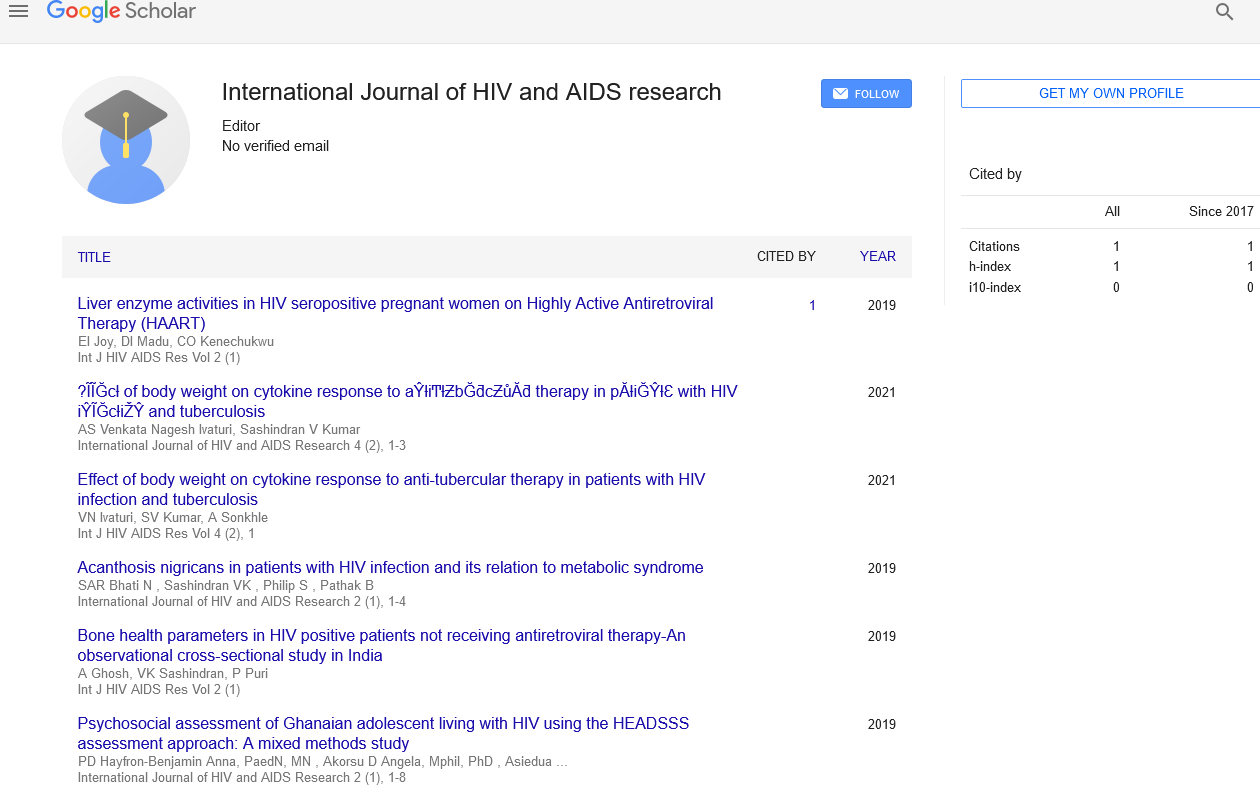A Short note on STD & HIV/AIDS
Received: 01-Mar-2022, Manuscript No. PULIJHAR-22-4709; Editor assigned: 03-Mar-2022, Pre QC No. PULIJHAR-22-4709 (PQ); Accepted Date: Mar 15, 2022; Reviewed: 09-Mar-2022 QC No. PULIJHAR-22-4709 (Q); Revised: 12-Mar-2022, Manuscript No. PULIJHAR-22-4709 (R); Published: 29-Mar-2022, DOI: DOI:10.37532/pulijhar.22.5(2).12
Citation: Anderson M. HIV and alcohol use: Addressing the issues. J HIV AIDS Res. 2022;5(2): 12.
This open-access article is distributed under the terms of the Creative Commons Attribution Non-Commercial License (CC BY-NC) (http://creativecommons.org/licenses/by-nc/4.0/), which permits reuse, distribution and reproduction of the article, provided that the original work is properly cited and the reuse is restricted to noncommercial purposes. For commercial reuse, contact reprints@pulsus.com
Abstract
With rising incidence of Sexually Transmitted Infections (STIs), the risk of contracting and transmitting the Human Immunodeficiency Virus (HIV) has been discovered to rise. The World Health Organization (WHO) has made STI testing a part of their routine. Every visit by HIV-positive patients there is just so much that can be done. Information on other sexually transmitted infections (STIs) among women receiving treatment at a Dodoma, Tanzania, HIV clinic, as a result, the necessity to look at the elements that cause STIs among HIV-positive individuals who are receiving treatment.
Key Words
Sexually transmitted infections; HIV; AIDS
Opinion
STDs, also known as Sexually Transmitted Infections (STIs), are infections that are transmitted from one person to another through sexual contact. Vaginal, oral, or anal sex is the most common forms of contact. They can, however, spread through other forms of intimate physical contact. Contact with contaminated blood, sperm, or vaginal secretions can transfer the virus. Flu-like symptoms such as fever, sore throat, and exhaustion can appear within a few weeks following HIV infection. Then, until it evolves into AIDS, the condition is usually asymptomatic. Weight loss, fever or night sweats, weariness, and repeated infections are among the signs of AIDS. Although there is no cure for AIDS, Meticulous Adherence to Antiretroviral (ARV) regimens can significantly slow the disease’s progression and prevent secondary infections and consequences.
What are STDs?
Chlamydia, gonorrhea, trichosmoniasis, syphilis, herpes, and HPV are some of the most common STDs (genital warts). STDs are sometimes referred to as “VDs.” If you have sex (ANY form of sex - vaginal, anal, or oral) without using a condom with someone who has an STD, you can develop an STD. Condoms are quite successful in preventing numerous STDs when used correctly every time. Call the numbers at the bottom of this page to learn more about the various STDs.
What is HIV (Human Immunodeficiency Virus)?
AIDS is caused by the HIV virus (Acquired Immune Deficiency Syndrome). Having vaginal, anal, or oral intercourse with someone who has HIV without using a condom spreads HIV. If you exchange drug “works” (such as needles and syringes) with someone who has HIV, you can develop HIV. HIV weakens the body’s immune system by attacking it. When a person’s immune system becomes too weak to combat illnesses, he or she develops AIDS. There are medications that can help patients with HIV, but no cure for HIV or AIDS exists.
HIV and STDs are transmitted in the same manner
By having sex without a condom with someone who is already infected, you can contract HIV or an STD. HIV and certain STDs can be transferred from a mother to her infant during pregnancy, delivery, or breastfeeding. Sharing medicine “works” with someone who has HIV or an STD can also transfer HIV and several STDs.
It is easier to contract HIV if you have an STD
An STD affects the cells that line the vaginal, penis, rectum, and mouth. HIV is able to enter your body more easily as a result of this. If you already have an STD, having intercourse with someone who has HIV and not using a condom increases your chances of contracting HIV.
STD Diagnosis
Because it’s difficult for healthcare providers to diagnose an STD based solely on symptoms, they’ll need to do certain testing and examinations. Depending on the STD suspected, this could entail:
– Bodily examinations
– Blood tests, samples of physiological fluids
– Specialty treatments including keyhole surgery or a colposcopy
– STDs can affect the body in a variety of ways
Depending on the issue, there is a variety of treatment methods available, including antibiotics, as well as other oral and topical treatments, including laser surgery. You may also be recommended to adopt lifestyle changes, such as refraining from sexual activity until your therapy is finished. It’s important to remember that with most STDs, there’s no way to reverse the disease’s effects. Some STDs are incurable, such as genital warts and AIDS.





